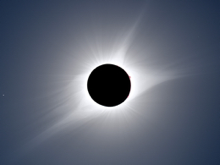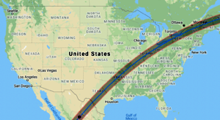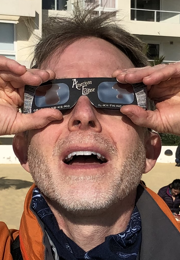 The next total solar eclipse to visit the United States will—like the great eclipse of 1878—be one for the history books. On April 8, 2024, the moon’s shadow will cross fifteen states, from Texas to Maine. It will darken skies above the homes of 30 million Americans and draw millions of additional spectators, making it the country’s most viewed total eclipse ever.
The next total solar eclipse to visit the United States will—like the great eclipse of 1878—be one for the history books. On April 8, 2024, the moon’s shadow will cross fifteen states, from Texas to Maine. It will darken skies above the homes of 30 million Americans and draw millions of additional spectators, making it the country’s most viewed total eclipse ever.
WHERE TO VIEW THE ECLIPSE
Although most of North America will experience a partial solar eclipse on April 8, to see the total eclipse you must be within the path of totality, a zone approximately 100 miles wide. Only within that path will you experience day suddenly transformed to twilight and watch the Earth’s blue sky peeled away, revealing bright stars and planets and the sun’s glorious corona. Even a 99% partial eclipse is nothing compared with the grandeur of a total eclipse. To understand what I mean, please watch my TED Talk.
Some major American cities are within the eclipse path, including Dallas, Austin, Indianapolis, Cleveland, Buffalo, and Rochester. Here are resources to help you plan for the historic day.
MAPS
You'll find excellent maps showing the time and duration of the eclipse at any given locale at GreatAmericanEclipse.com. Hone your search with this interactive map by Fred Espenak (and check out Fred’s Road Atlas for the Total Solar Eclipse of 2024). Another great resource is the free Totality app by Big Kid Science, which you can download to your phone.
 An ideal viewing spot is a large field, lakeshore, or rooftop with an expansive view in all directions, someplace where you can take in the entire sky. Many public events and festivals are being planned for the eclipse; see a list at NationalEclipse.com. Remember, to experience the total eclipse you must be within the path of totality, and the closer you are to the centerline, the longer the total eclipse will last. If you are even a mile outside the path, you will miss the spectacle.
An ideal viewing spot is a large field, lakeshore, or rooftop with an expansive view in all directions, someplace where you can take in the entire sky. Many public events and festivals are being planned for the eclipse; see a list at NationalEclipse.com. Remember, to experience the total eclipse you must be within the path of totality, and the closer you are to the centerline, the longer the total eclipse will last. If you are even a mile outside the path, you will miss the spectacle.
WEATHER
A key consideration for successful observing is the weather. To evaluate your odds of clear skies on April 8, see an analysis of historical climate statistics along the eclipse path at Jay Anderson’s Eclipsophile.com. Of course, past performance is no guarantee of future results, so keep a close eye on the forecast in the days just before the eclipse.
EYE SAFETY
Be sure to get yourself a pair of certified-safe solar glasses for the partial phases of the eclipse. The American Astronomical Society offers trustworthy advice and a list of reputable sellers. However, if you are in the path of totality, remember to take the glasses off during the brief total phase, when the moon completely blocks the surface of the sun. Then, and only then, is it safe to look with the naked eye.
PHOTOGRAPHY
My strong recommendation is that you not try to photograph the eclipse, especially if this is your first time in totality. The phenomenon is so fleeting that you'll want to experience every second without worrying about framing an image and getting the exposure right. If you are adamant about photographing it, however, an easy way to do so with your smartphone is by using the Solar Snap Eclipse App Kit. To take more sophisticated photos, read these ten tips by Alan Dyer, author of How to Photograph the Solar Eclipses: A Guide to Capturing the 2023 and 2024 Eclipses of the Sun.
EDUCATION
If you're a teacher planning an event at your school, check out the eclipse pamphlets and webinars from the National Science Teaching Association. If you're with a library or museum, see my step-by-step guide to creating your own local eclipse history exhibit. Librarians will find a trove of additional eclipse resources from the STAR Library Network.